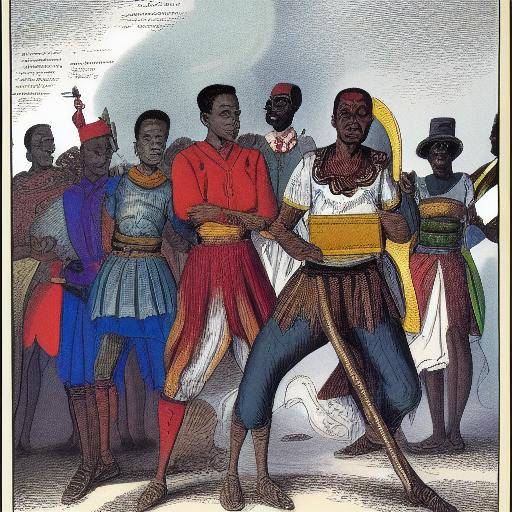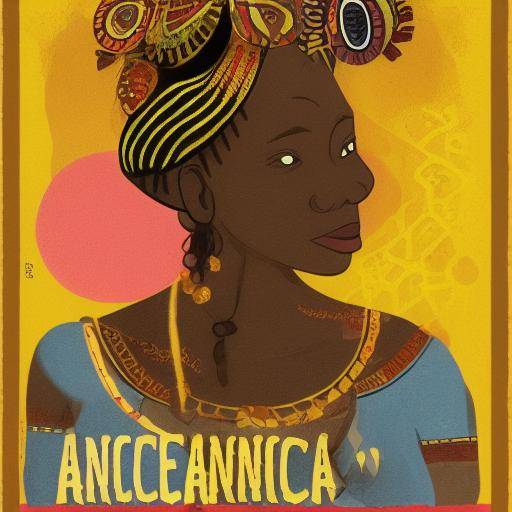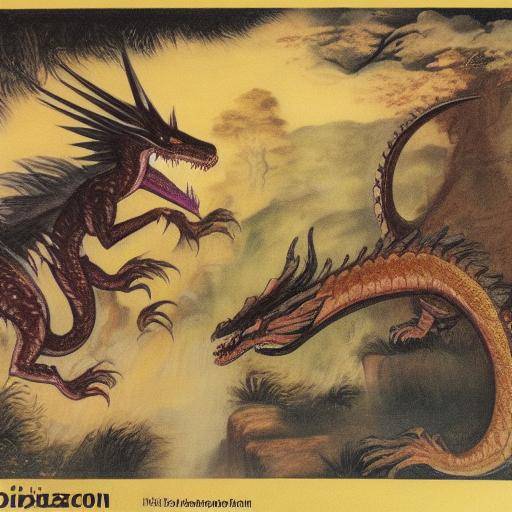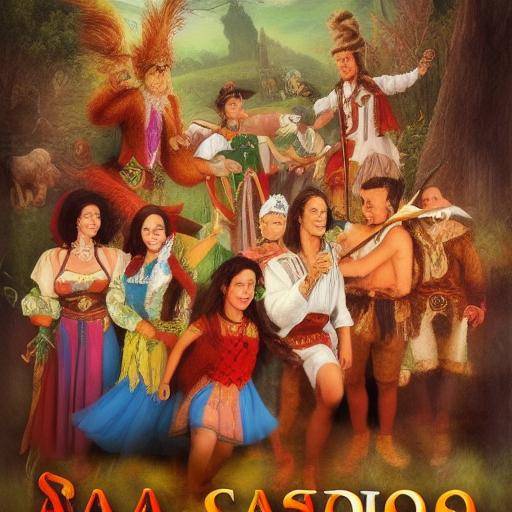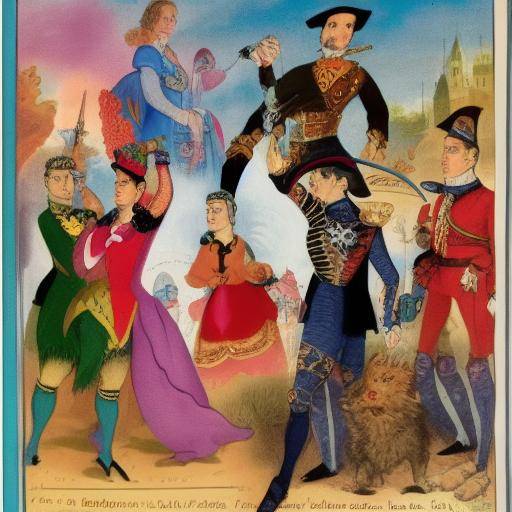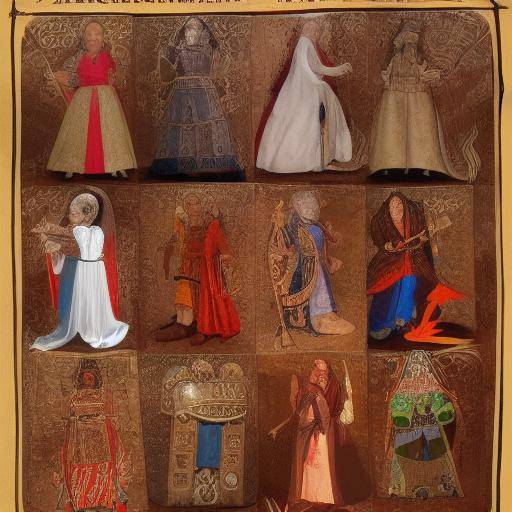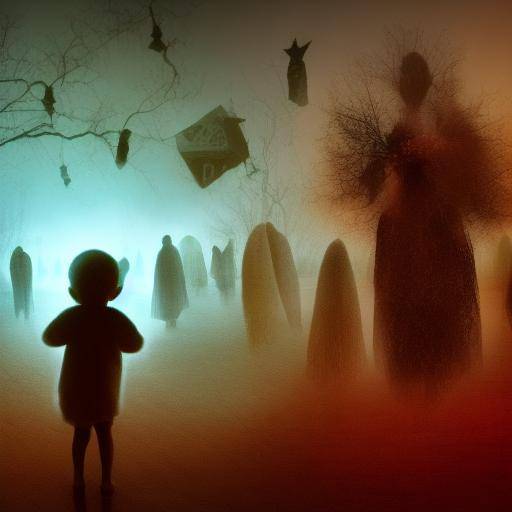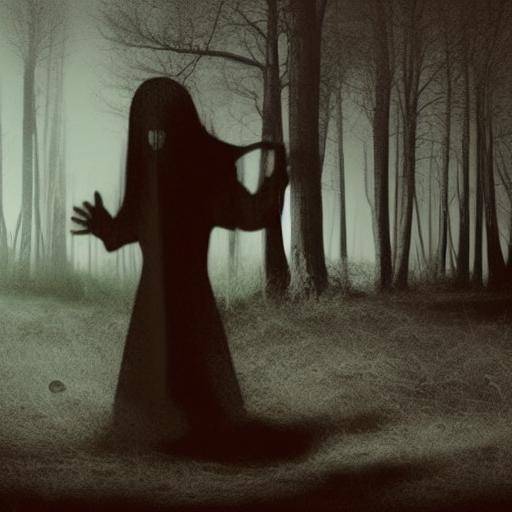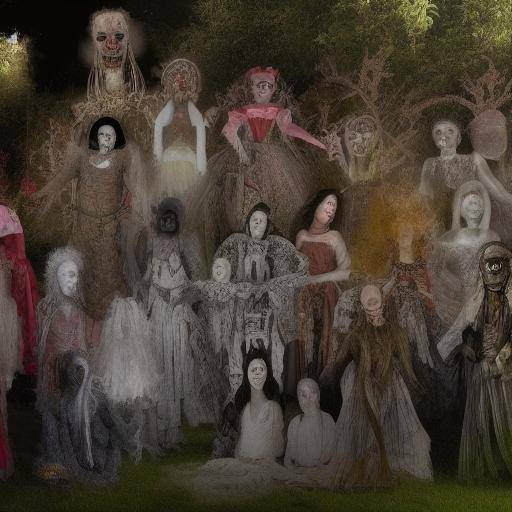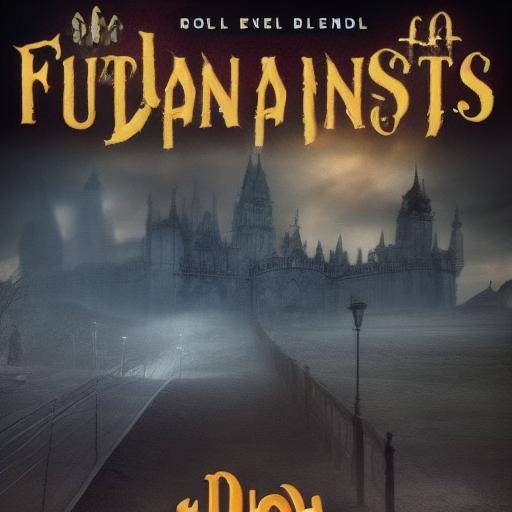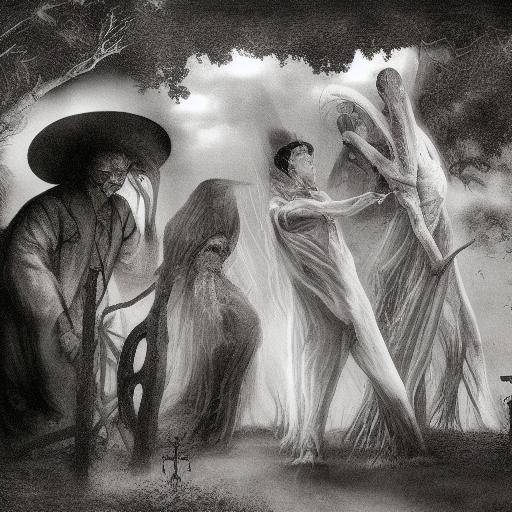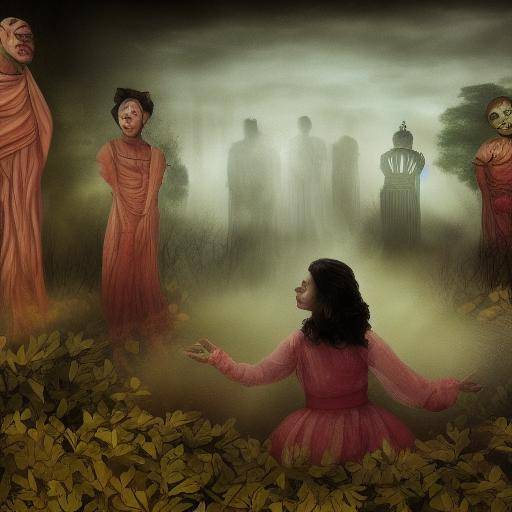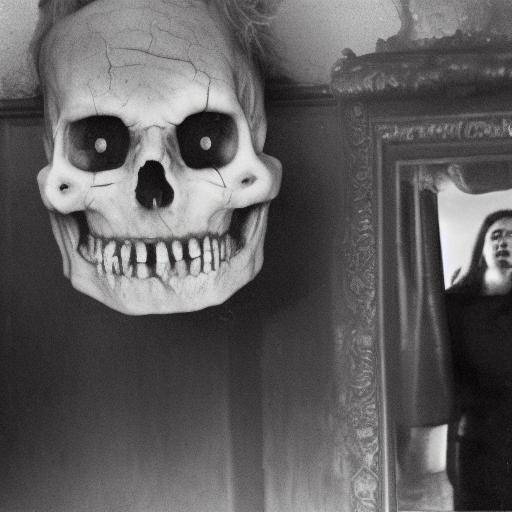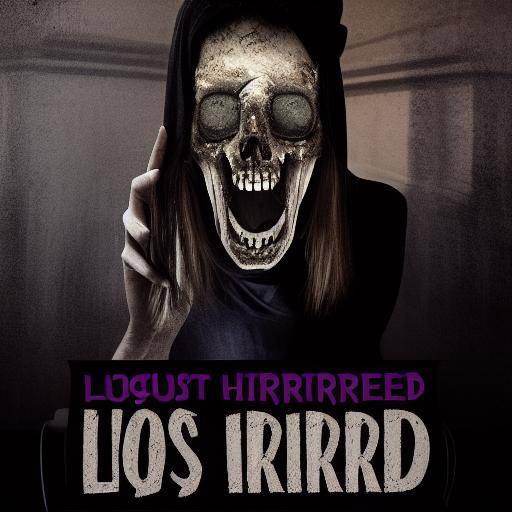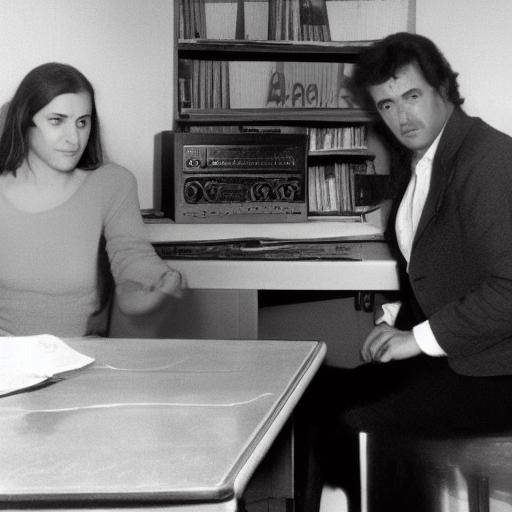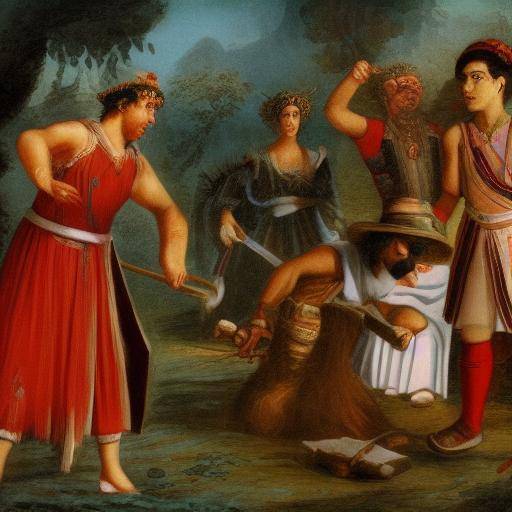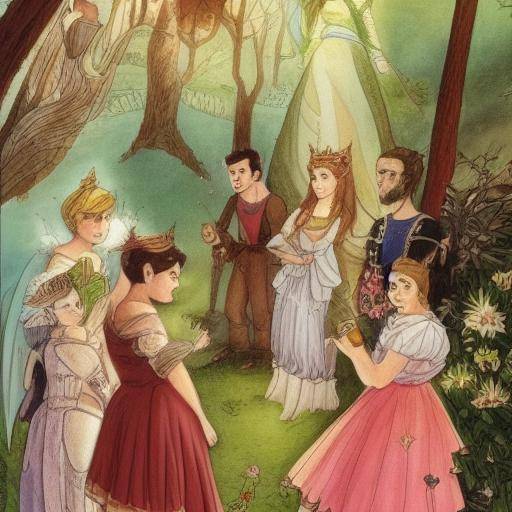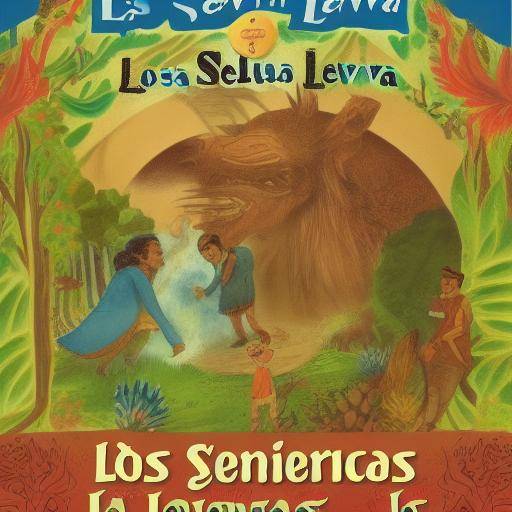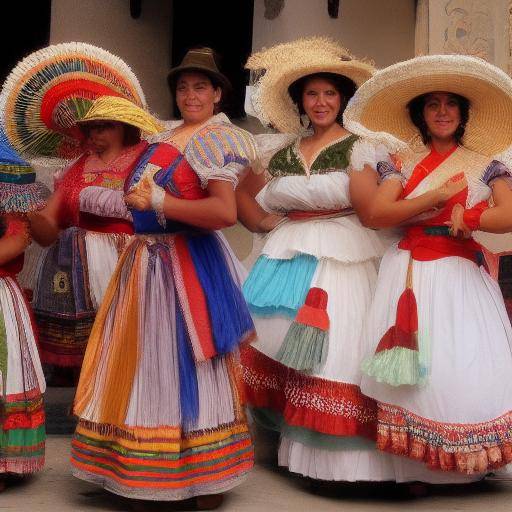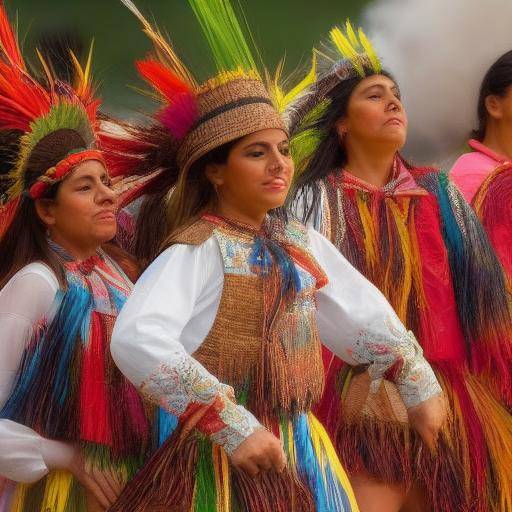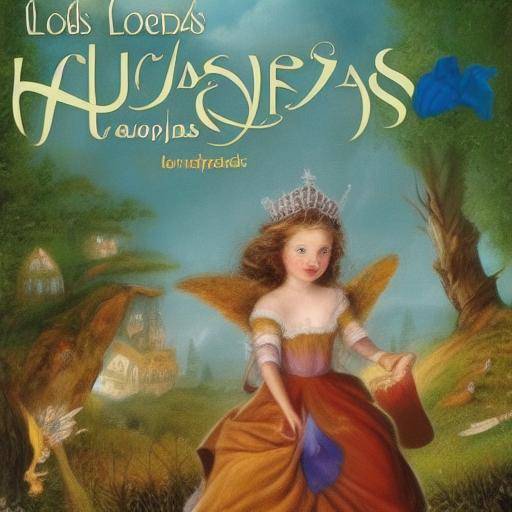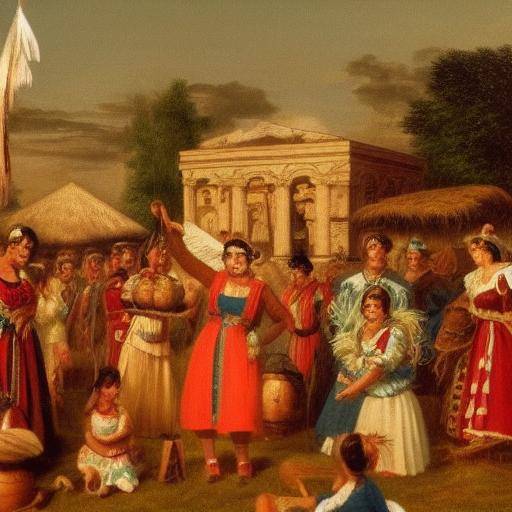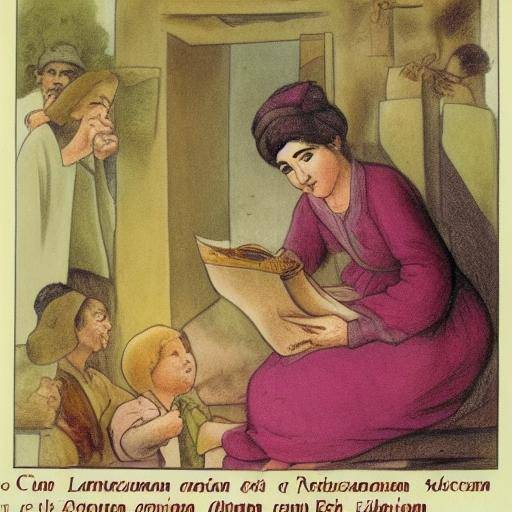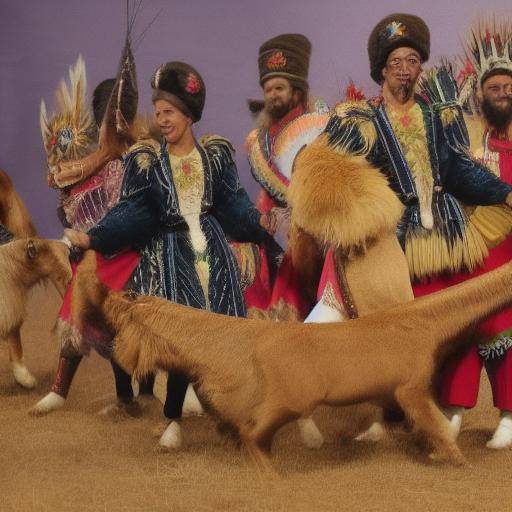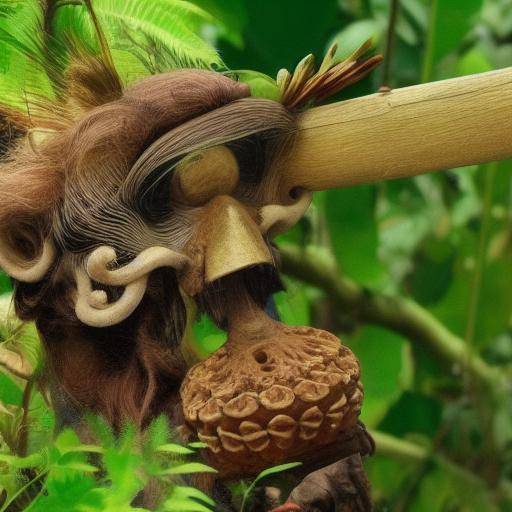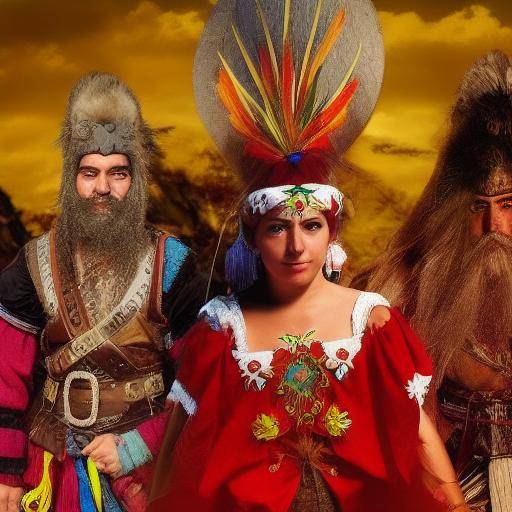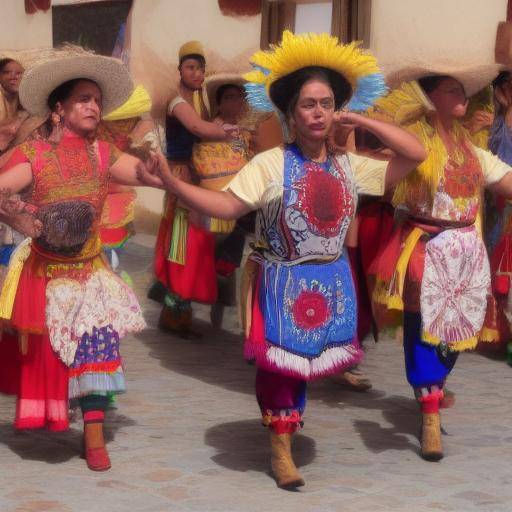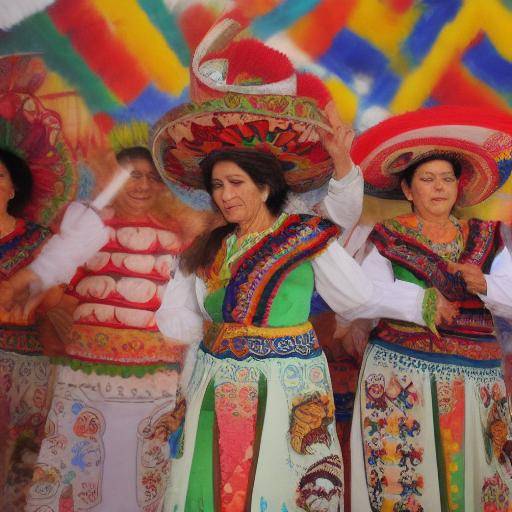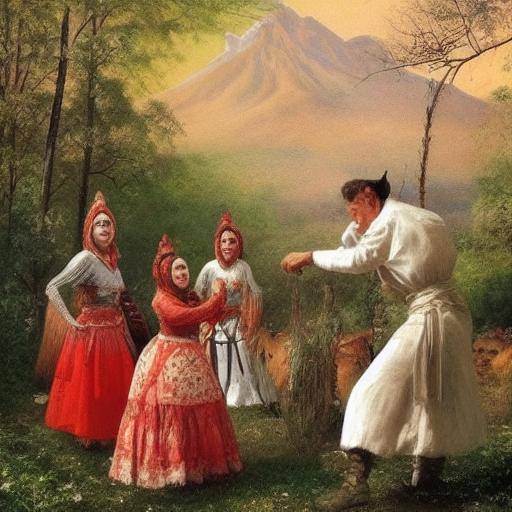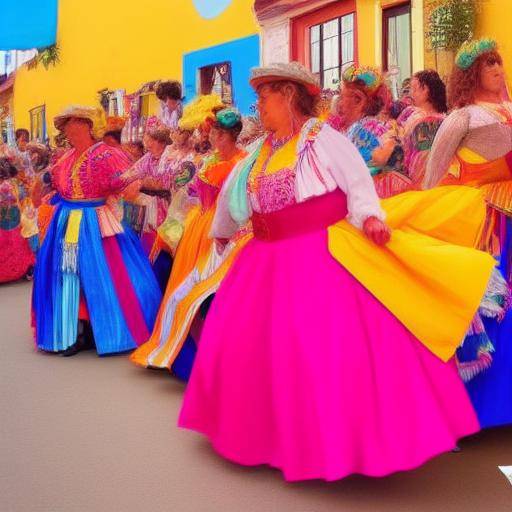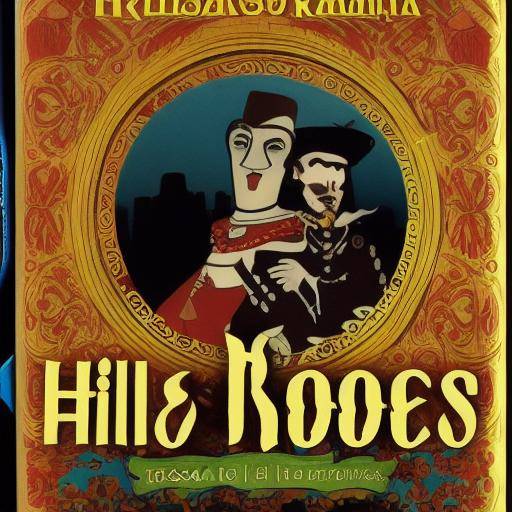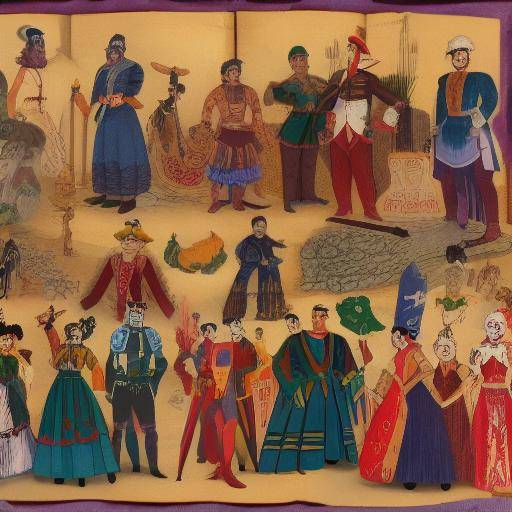
Latin American folklore is rich in stories of heroes and villains who have captivated generations with their exploits, loves and battles. From pre-Columbian mythologies to modern legends, these stories have reflected values, fears and aspirations of the Latin American people. In this article, we will explore the fascinating world of Latin American folklore heroes and villains, their origins, evolution, meanings and how they have left an indelible mark on the culture of the region.
Introduction
The stories of heroes and villains in Latin American folklore have been transmitted from generation to generation, enriching with the diversity of indigenous, African and European cultures that converged on the continent. This narrative legacy has given life to legendary characters, whose prowess and rivalries have forged the collective identity of Latin American peoples.
In this article, let us enter the magical and fascinating world of Latin American folklore heroes and villains. We will discover the stories that have endured over time, as well as their relevance today. From the courage of the indigenous warriors to the machinations of the evil conquerors, we will explore how these stories have influenced the arts, literature, cinematography and music of Latin America.
History and Background
Latin American folklore is a treasure of epic and fantastic stories that have their roots in pre-Columbian cultures, European colonization, and oral tradition. The stories of heroes and villains reflect the struggles for the freedom, justice and identity of Latin American peoples over the centuries. The mythical figures such as the Aztec god Quetzalcóatl, the inca rebel leader Tupac Amaru, and the diabolical entity known as the Saci-Pererê, are just a few examples of the diversity and wealth of the stories that have persisted in the region.
The stories of heroes and villains have evolved over time, adapting to the changing socio-political and cultural circumstances of Latin America. In this way, Latin American folklore has resisted the test of time, living both in the oral traditions of indigenous communities and in contemporary artistic productions. The stories of courage, betrayal, love and sacrifice have transcended borders, connecting Latin American peoples into a common fabric of shared narratives.
Analysis in Deep
The study of the stories of heroes and villains in Latin American folklore gives us a unique vision of the beliefs, values and fears rooted in the collective psyche of the region. These narratives offer us a window to the understanding of Latin American cultural identity, as well as its complex relationships with the past, the present and the future. They also allow the analysis of archetypes, symbols and myths that have shaped the region's worldview.
The stories of heroes and villains in Latin American folklore also delve into the diversity of artistic and literary expressions of the region, revealing the wealth of their cultural heritage. From the cave paintings to contemporary novels, these stories continue to inspire artists, writers and filmmakers, weaving a spectre of imagination that encompasses fantasy, magical realism and historical chronicle.
The adoption of modern digital technologies and media has allowed the global dissemination of these stories, bringing Latin American folklore to audiences from all latitudes. Film adaptations, television series and video games based on these stories have contributed to their pervival and popularity, becoming cultural benchmarks that transcend borders.
Comprehensive review
Latin American folklore, through his stories of heroes and villains, offers teachings and reflections on the human condition, the struggle between good and evil, resistance to adversity and the search for justice. These stories have served as vehicles for transmitting values, traditions and wisdom throughout generations. In addition, they have contributed to building collective identities and strengthening social cohesion in the region.
The preservation and revitalization of Latin American folklore, particularly its stories of heroes and villains, is vital to safeguard the cultural heritage of the region. The transmission and dissemination of these narratives through educational programs, community projects and the media contribute to their preservation and renewal, ensuring their significance for generations to come.
Comparative analysis
By comparing the stories of heroes and villains in Latin American folklore, the diversity of approaches, themes and contexts present in the different cultural traditions of the region is evident. From the Popol Vuh epic of the Mayas to contemporary urban legends, each story reflects the particularities of its historical and geographical context, as well as the cultural influences that have shaped its development.
The narratives of heroes and villains in Latin American folklore also reveal the interconnection between the various cultures and ethnic groups that make up the region, as well as the processes of mestizaje and syncretism that have enriched their rich cultural heritage. These stories transcend political and ethnic divisions, becoming a bridge that unites the peoples of Latin America in their diversity.
Practical Tips and Accessible Tips
For those interested in exploring and preserving Latin American folklore, especially regarding the stories of heroes and villains, it is advisable to participate in activities of rescue and diffusion of cultural heritage. Support for folk festivals, the promotion of indigenous literature and collaboration with local communities are concrete actions that contribute to the preservation and revitalization of the region's folklore.
In addition, academic study and research in the field of mythology, oral traditions and popular literature can offer new perspectives and approaches to understand and value the wealth of Latin American folklore. The promotion of interculturalism and respect for local narratives are also fundamental aspects for the enrichment and dissemination of folklore in the region.
Perceptions of Industry and Expert Reviews
Latin American folklore experts agree on the importance of preserving and spreading the stories of heroes and villains as a fundamental part of the cultural legacy of the region. Rescue and document these narratives, promote their appreciation in education and arts, and promote intercultural dialogue are priority aspects for their conservation and transcendence in the twenty-first century.
The impact of Latin American folklore, in particular its stories of heroes and villains, extends beyond the borders of the region, finding echo in the international academic, artistic and cultural spheres. The diversity and originality of these stories have aroused growing interest, promoting research, adaptations and collaborative projects that promote the appreciation and diffusion of the wealth of Latin American folklore.
Case Studies and Real Life Applications
Various initiatives in Latin America have highlighted the value of folklore today. Projects to rescue oral traditions, multimedia adaptations of popular legends, and the integration of folklore into educational programs are concrete examples of the relevance and relevance of the stories of heroes and villains in the region. These efforts help to strengthen the sense of identity and belonging of the communities, as well as to enrich the cultural heritage of Latin America.
Future Trends and Predictions
In the future, there is an increase in interdisciplinary research and international collaboration for the study of Latin American folklore, including their stories of heroes and villains. This trend is expected to boost new theoretical, methodological and technological approaches that enrich the understanding and diffusion of the folk heritage of the region, contributing to its preservation and continuous renewal.
It is also anticipated that Latin American folklore, including its stories of heroes and villains, will continue to exert a significant influence on the artistic, literary and audiovisual production of the region. The adaptation of these stories to digital media, the exploration of new narrative formats and the promotion of intercultural dialogue around popular narratives are aspects that are projected to be relevant to their evolution in the 21st century.
Conclusions
The stories of heroes and villains in Latin American folklore constitute an invaluable legacy that transcends time and space, enriching the cultural wealth of the region and projecting its influence on a global scale. These narratives are not only a source of entertainment, but also bearers of ancestral knowledge, collective values, and world visions that continue to inspire generations.
In exploring the stories of heroes and villains of Latin American folklore, we have entered into a magical and diverse universe that invites us to reflect on the identity, memory and creativity of Latin American peoples. These stories connect us with the roots of culture and offer us a collection of timeless teachings that deserve to be preserved and celebrated.
Frequently asked questions
1. What are some of the most outstanding figures of heroes and villains in Latin American folklore?
In Latin American folklore, figures such as the Zorro, the Cid Campeador, the Llorona, the Hat, the Curupira, among others stand out. These figures represent values, fears and aspirations rooted in the popular tradition of the region.
2. How has Latin American folklore impacted on contemporary popular culture?
Latin American folklore has left a significant mark on contemporary popular culture through cinematographic, literary, musical adaptations and influence on digital narrative.
3. What is the importance of preserving the stories of heroes and villains in Latin American folklore?
The preservation of these stories is essential to safeguarding cultural heritage, strengthening collective identity and promoting Latin American cultural diversity.
4. What role do the stories of heroes and villains play in transmitting values and traditions in Latin American communities?
The stories of heroes and villains are vehicles for the transmission of values, traditions and ancestral wisdom, strengthening the cultural fabric of Latin American communities.
5. Where can those interested in Latin American folklore find more resources and information about these stories?
The stakeholders can access specialized libraries, museums, cultural centers, and digital platforms that offer resources on Latin American folklore, as well as participate in festivals and events dedicated to this theme.
6. How can I contribute to the preservation and dissemination of Latin American folklore in my community?
You can contribute through community projects, educational programs, folk festivals, and the promotion of intercultural dialogue, as well as support initiatives to rescue and spread cultural heritage in your environment.
By exploring the stories of heroes and villains in Latin American folklore, we have entered a universe of myths, legends and narratives that transcend time and space, enriching the cultural identity of the region. These stories invite us to celebrate diversity, to value ancestral heritage and to explore the inexhaustible creativity that has given life to these amazing stories.

